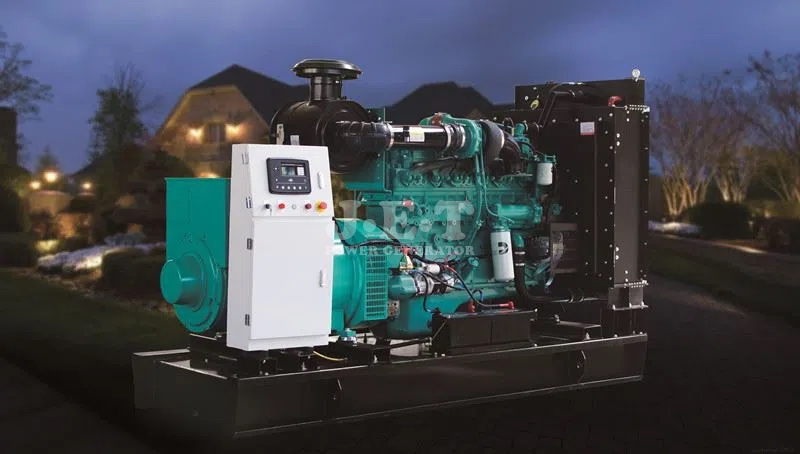Common Problems In Equipment Maintenance
- 03 - 01 - 2020
- 397
Problems with equipment maintenance methods

1. Equipment maintenance cannot correctly judge and analyze faults, and blind dismantling and unloading are commonplace.
Because some maintenance personnel are not clear about the mechanical structure and principle of the equipment, they do not carefully analyze the cause of the failure and cannot accurately determine the fault location. They blindly dismantle and dismantle the equipment based on the “probably, almost” thinking. Due to poor maintenance skills and processes, new problems have arisen. For example, at a certain station, a 120KW diesel generator has insufficient power and mechanical failure. The maintenance personnel disassembled and disassembled the PT fuel injection pump and the fuel injector and found no cause of the failure. After replacing one fuel injection pump, the failure remained. Finally, check that the fault is caused by excessive impurities and moisture inside the diesel used. However, the disassembly caused the performance of the PT fuel injection pump to be significantly reduced, and the power of the diesel generator was insufficient. Therefore, when the machine fails, it must be tested by testing equipment; if there is no testing equipment, traditional fault judgment methods and means such as “Ask, See, Check, and Test” can be combined with the structure and working principle of the equipment to determine the most Potential malfunctions. When deciding equipment failures, the “exclusion method” and “comparison method” are commonly used. They are carried out in the order from simple to complex, first from the outside, then from the inside, first from the assembly and then from the components. .
2. The blind replacement of parts and components, the phenomenon of “replacement repair” exists to varying degrees.
It is relatively difficult to judge and eliminate equipment failures. Some maintenance personnel have always adopted the replacement test method. Regardless of large and small parts, as long as it is considered to be the part that may cause the failure, the replacement test is performed one by one. As a result, not only the failure was not eliminated, but also parts that should not be replaced were replaced at will, which increased maintenance costs.
Some faulty parts can be completely restored to their technical performance through repair, such as generators, air compressors, blowers, burners, gear oil pumps, etc., which can be repaired without complicated repair processes. When repairing, you should carefully analyze and determine the cause and location of the fault according to the failure phenomenon, and repair the parts that can be repaired to restore the technical performance, and eliminate the practice of blindly replacing parts.
3. The phenomenon of not paying attention to detecting the fitting clearance of parts is quite numerous.
In the maintenance of common diesel generators, the gap between the piston and the cylinder liner, the “three gaps” of the piston ring, the piston gap, the valve gap, the plunger clearance, the brake shoe clearance, the main and driven gear meshing clearance, the bearing axial and Radial clearance, valve rod and valve guide matching clearance, and other types of models have strict requirements, must be measured during maintenance, parts that do not meet the clearance requirements must be adjusted or replaced. In actual maintenance work, there are many cases of blindly assembling components without measuring the clearance, which leads to early wear or ablation of bearings, diesel generator burning oil, difficult starting or deflagration, broken piston rings, impact of parts, oil leakage, Leakage and other faults. In some cases, serious mechanical damage may occur due to improper fitting clearances.
4. Sometimes the parts are reversed when the equipment is assembled.
When repairing equipment, some parts are assembled with strict orientation requirements; only proper installation can ensure that parts work properly. The external features of some parts are not obvious, and they can be installed in both the front and the back. In actual work, reverse installation often occurs, leading to early damage to parts, mechanical failure, and equipment damage. Such as engine cylinder liners, non-equidistant valve springs, engine pistons, piston rings, fan blades, gear oil pump side plates, skeleton oil seals, thrust washers, thrust bearings, thrust washers, oil retaining rings, fuel injection pump plungers , Clutch friction disc hub, transmission shaft universal joints and other components during installation, if you do not understand the structure and installation precautions, the easiest to install reverse. As a result, it will not work properly after assembly, resulting in equipment failure. Therefore, when assembling parts, maintenance personnel must grasp the requirements of the structure and installation direction of parts, and should not be blindly installed.
5. Maintenance methods are not formal, and “maintaining the symptoms but not the root causes” is still the habit of some maintenance units.
When repairing equipment, some maintenance personnel do not adopt correct maintenance methods, and consider emergency measures to be all-around, replacing “maintenance” with “emergency”, and there are still many phenomena that treat the symptoms but not the root causes. For example, “replacement by welding” is an example. Some components could be repaired, but some maintenance personnel use the method of “welding to death” to save trouble; in order to make the diesel generator “powerful”, the fuel supply of the fuel injection pump and the fuel injection of the fuel injector are increased pressure. These irregular maintenance methods can only be used for emergency, but cannot be used for a long time. The cause of the failure must be found out fundamentally. The formal maintenance method should be adopted to eliminate the failure, which should attract the attention of maintenance personnel.
